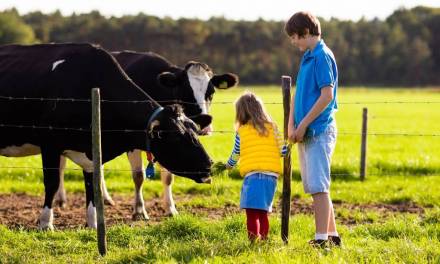Wildlife is good for us, but how do we introduce more of it into students’ lives? We look at how to set up a nature club.
Recently we discussed how nature can have a positive impact on academic performance. Just 20 minutes in a natural setting can improve kids’ mood, perception and cognitive ability.
But far too few children spend time outside, while research for Jordans Farm Partnership found that a third of British parents say they don’t know enough about wildlife to teach their kids.
You can help address this by setting up a nature club.
Choose a suitable location for your nature club
It’s important that your nature club is accessible and easy to attend. You’ll need a base from which to operate – if you’re constantly having to get in touch with students to tell them where to meet, both you and they will quickly lose interest.
During the summer this can be outside, but for rainy days and winter you’ll need access to a classroom. Meet at the same time on the same day once a week.
Communicate regularly
Harness the power of technology and set up Facebook and WhatsApp groups so students can all keep in touch and share their experiences. Encourage them to also share ideas and suggestions for your next meeting.
Students need to be enthusiastic about the club, and to maintain interest you’ll have to fill it with lots of fun and interesting things to do and learn.
Start somewhere local
Getting out and about in nature might seem impossible, especially in inner-city schools in which the countryside can almost feel like a far-away country.
So start small. Schools have playing fields – is there a corner you can take over to plant a wilderness garden? You can help students as they research soil types, which plants are native, what animals they are good for and so on. Conservation charity Plantlife is a good place to start.
One way to really pique kids’ interest is to grow things they can eat. Plant fruit, vegetables and herbs, harvest them and then cook a meal together.
Nature reserves
Even the most urban of schools are likely to have a park within walking distance, while Britain has an excellent network of nature reserves.
Most of these are owned by the main conservation organisations: the Wildlife Trusts, the National Trust, the Wildfowl and Wetlands Trust and the RSPB. There are also National Nature Reserves, which are managed by the separate administrations of England, Scotland and Wales.
Check out the websites for nearby locations. Or even one further afield. My own appreciation for nature partly stems from a school camping trip to Wicken Fen NNR in Cambridgeshire. We went on nature walks, learnt about water creatures through pond dipping and did a spot of birdwatching.
Vitamin N: the Essential Guide to a Nature-Rich Life by Richard Louv is packed with more ideas, as well as online and print resources.
Your nature club can help conservation projects
Conservation is a huge subject to tackle and all the charities above have excellent resources for schools, including events like the RSPB’s Big Schools Birdwatch or Big Wild Sleepout.
Smaller organisations include Bumblebee Conservation Trust and Butterfly Conservation. You can teach students all about endangered species and what we can do to protect them.
The environment often gets overlooked. But it’s what provides the air we breathe, the water we drink and the food we eat. Your nature club could be a training ground for the conservationists of the future.
In the meantime, we’d love to hear about your experiences in setting up a club – share your stories in the comments.
Rebecca has been a writer and editor for almost 20 years. She writes on a huge range of subjects, concentrating on sport, nature, mental health, and crafts.









